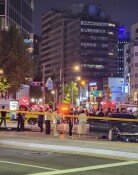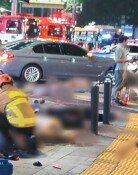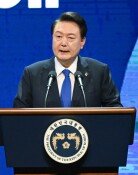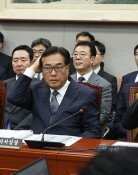Police Seek to Identify Violent Protestors
Police Seek to Identify Violent Protestors
Posted June. 28, 2008 08:34,
Some 20 frontline protestors facing down riot police near Saemoonan Church in downtown Seoul moved quickly around 11:30 p.m. Wednesday when candlelight vigils turned violent. They brought two 10-meter ropes and hung them in the police bus.
The crowd standing in a row pulled the ropes at the order of their leaders. The frontline group successfully moved the heavy bus by smartly changing directions, not just pulling.
As protests grow violent to the level of using iron pipes, the influence of the lead protestors is growing as well. They are different from organizers of the Peoples Association for Measures against Mad Cow Disease, not to mention protestors calling for non-violence. Police are struggling to find who the leaders of violent protests are.
Some 20 male protestors with hats and facemasks were spotted at the Sejong intersection, downtown Seoul, Thursday night.
They threw sand at police and vandalized Koreana Hotel, a subsidiary of the Chosun Ilbo, a conservative newspaper, beating up a security guard.
On Wednesday and Thursday, some protestors showed up with dangerous weapons such as slingshots equipped with iron balls, iron pipes, stone-filled plastic bottles, and bricks.
Most of them are in their 20s and 30s but a few are older. Police think that they are not related to organizations and suspect that those who have been calling for violent protests on various Internet portals have taken to the streets.
Police are also focusing on the fact that those disgruntled with their economic situation and personal condition including the unemployed and the homeless are among those arrested.
As the individuals are unknown, police cannot easily identify them even though they take pictures of the protests on site.
Some claim that professional protestors are involved, experienced demonstrators who participated in the notoriously violent protests against the U.S. army relocation to Pyeongtaek in 2006 and the anti-Free Trade Agreement protests in 2007.
A police intelligence source said, As many experienced protestors lead the demonstrations, they are becoming more violent and organized.
sukim@donga.com







